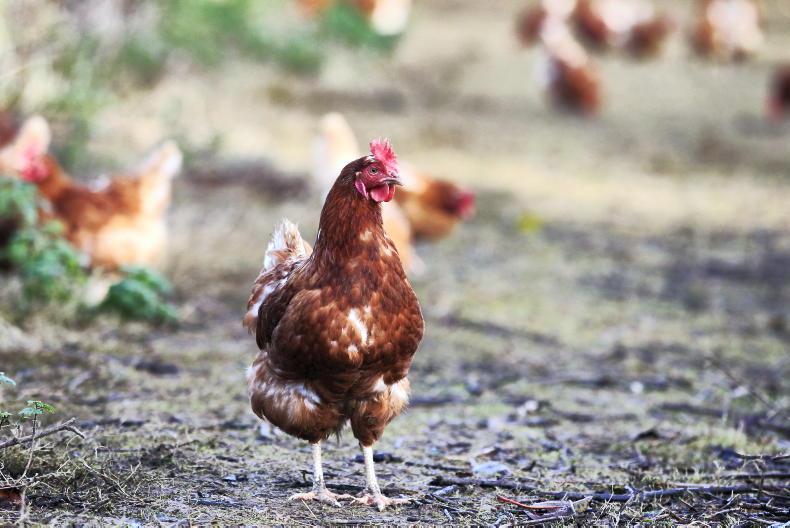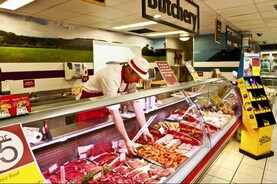The agricultural operating surplus increased by 58% to €4.3bn in 2024, according to the Central Statistics Office (CSO).
The CSO’s final estimated has revised a previous figure to show that the surplus increased by €1.6bn last year which is says is due to the value of most agricultural outputs increasing in 2024 while input costs fell.
When the impact of net interest payments and land rental costs are factored in, the growth in entrepreneurial income was up 73%, or €1.5bn, to €3.5bn.
In total, the value of agricultural output at basic prices went up by 9%, or by €1bn, to €12.5bn. Milk accounted for one-third of this value, with its value rising by 16% (€575m) to €4.1bn.
Mairead Griffin, statistician in the Agriculture Accounts and Production Section, said:
“This estimate shows that while agricultural incomes have not yet recovered to their 2022 levels, they are significantly higher than they were in 2023 mainly due to higher output prices and lower costs.
“As milk accounts for one third of the value of Irish agricultural output at basic prices and cattle a further 25%, movements in their prices have a significant impact on agricultural incomes.”
Other outputs
The overall value of livestock rose by 4%, or €186m, primarily due to stronger prices. The volume of cattle produced was down 3% but higher prices saw their value grow by 2% or €51m.
Meanwhile, sheep values were up 12% or €43m as prices grew by 18%.
Pigs and poultry were the only categories of livestock that experienced lower prices, with both down by 1%.
However, with the volume of pig production up by 8%, their overall value grew by €42m to €710m.
Crop values also experienced growth in 2024, increasing by 7% to €2.8bn despite volumes falling by 5%.
Cereals were up by 11%, or €37m, because of higher volumes. Potato values rose by 21% (€45m) to €264m, with larger volumes accounting for 12% of this growth.

Pigs and poultry were the only categories of livestock that experienced lower prices, with both down by 1%. / Ramona Farrelly
Inputs
Intermediate consumption costs decreased by 4%, down €290m, to €7.7bn in 2024.
This drop was mainly due to the reduced cost of fertilisers and feeding stuffs. Expenditure on Fertilisers fell by 26% (€216m) due to lower prices which also fell by 29%.
“The cost of feeding stuffs fell by 7% or €148m due to lower prices (down 13%) while expenditure on energy and lubricants decreased by 5%, also because of lower prices (down 6%),” added Griffin.
“Although many costs fell, some did increase, most notably the cost of contract work, which grew by €57m or 9%, financial intermediation services indirectly measured (FISIM), which cost an additional 15% (€18m), and forage plants (up €71m or 4%).
Incomes
Subsidies continued to play an important role in farm incomes, according to the CSO.
The value of subsidies on products grew by 28%, or €24m to €109m last year. Meanwhile, other subsidies less taxes on production rose by 24% (€382m) to almost €2.0bn in 2024.
Read more
Food remains relatively cheap despite rise in retail prices
Insurance costs are rising again
The agricultural operating surplus increased by 58% to €4.3bn in 2024, according to the Central Statistics Office (CSO).
The CSO’s final estimated has revised a previous figure to show that the surplus increased by €1.6bn last year which is says is due to the value of most agricultural outputs increasing in 2024 while input costs fell.
When the impact of net interest payments and land rental costs are factored in, the growth in entrepreneurial income was up 73%, or €1.5bn, to €3.5bn.
In total, the value of agricultural output at basic prices went up by 9%, or by €1bn, to €12.5bn. Milk accounted for one-third of this value, with its value rising by 16% (€575m) to €4.1bn.
Mairead Griffin, statistician in the Agriculture Accounts and Production Section, said:
“This estimate shows that while agricultural incomes have not yet recovered to their 2022 levels, they are significantly higher than they were in 2023 mainly due to higher output prices and lower costs.
“As milk accounts for one third of the value of Irish agricultural output at basic prices and cattle a further 25%, movements in their prices have a significant impact on agricultural incomes.”
Other outputs
The overall value of livestock rose by 4%, or €186m, primarily due to stronger prices. The volume of cattle produced was down 3% but higher prices saw their value grow by 2% or €51m.
Meanwhile, sheep values were up 12% or €43m as prices grew by 18%.
Pigs and poultry were the only categories of livestock that experienced lower prices, with both down by 1%.
However, with the volume of pig production up by 8%, their overall value grew by €42m to €710m.
Crop values also experienced growth in 2024, increasing by 7% to €2.8bn despite volumes falling by 5%.
Cereals were up by 11%, or €37m, because of higher volumes. Potato values rose by 21% (€45m) to €264m, with larger volumes accounting for 12% of this growth.

Pigs and poultry were the only categories of livestock that experienced lower prices, with both down by 1%. / Ramona Farrelly
Inputs
Intermediate consumption costs decreased by 4%, down €290m, to €7.7bn in 2024.
This drop was mainly due to the reduced cost of fertilisers and feeding stuffs. Expenditure on Fertilisers fell by 26% (€216m) due to lower prices which also fell by 29%.
“The cost of feeding stuffs fell by 7% or €148m due to lower prices (down 13%) while expenditure on energy and lubricants decreased by 5%, also because of lower prices (down 6%),” added Griffin.
“Although many costs fell, some did increase, most notably the cost of contract work, which grew by €57m or 9%, financial intermediation services indirectly measured (FISIM), which cost an additional 15% (€18m), and forage plants (up €71m or 4%).
Incomes
Subsidies continued to play an important role in farm incomes, according to the CSO.
The value of subsidies on products grew by 28%, or €24m to €109m last year. Meanwhile, other subsidies less taxes on production rose by 24% (€382m) to almost €2.0bn in 2024.
Read more
Food remains relatively cheap despite rise in retail prices
Insurance costs are rising again







 This is a subscriber-only article
This is a subscriber-only article










SHARING OPTIONS: